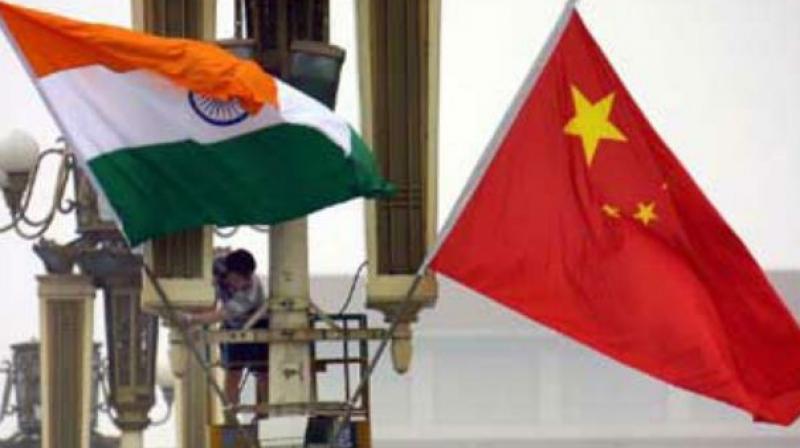Can India stare down the dragon?
India has to be prepared for Chinese retaliation while ascertaining whether the beast is an angry panda or a modern dragon.

While the Sino-Indian standoff at Doklam persists, analysts have attempted to decipher Chinese motives and possible outcomes. Sinologists, whether former diplomats or academicians, have looked from the vantage point of Chinese history, enquiring whether this was a recurrence of the Middle Kingdom syndrome whereby China views neighbouring powers as potential tributaries or President Xi Jinping was merely purging the calumny of the 19th century exploitation and subjugation of China by colonial powers.
Chinese aggression may be a post 2008 financial and banking crisis phenomena, but its desire to stymie rise of India is an old one. The process began within months of the 1962 Sino-India war when Pakistan and China finalised their Kashmir border agreement in 1963. Pakistan ceded the Shaksgam Valley, abutting the Siachen glacier, to China, commencing Chinese interference in India-Pak relations and their alliance with Pakistan. China was resorting to its historical wisdom of playing one “barbarian” against another. In 1963, this Sino-Pak dalliance displeased the administration of President John F. Kennedy, which was pushing India to negotiate the settlement of the Kashmir issue with Pakistan. Leader of the Indian delegation Sardar Swaran Singh learnt about the agreement as he arrived in Karachi for talks, thereby vitiating India-Pak parleys.
Thus, it is surprising that China ignored Indian protests about the China-Pakistan Economic Corridor (CPEC) traversing Gilgit-Baltistan, over which India has a claim without even attempting to engage India. Recent Chinese obduracy on the India-China border dispute, in the meetings of the special representatives dates from about the time, the India-US nuclear deal was finalised. Chinese strategic calculus was to keep India from aligning too closely with the US and use border negotiations and concessions as a lever. But the current phase of bilateral relations is conditioned by the rise, both in India and China, of nationalistic leaders in the period 2012-14.
Both Mr Xi and Narendra Modi have similarly consolidated power, although the former is a blue-blooded “princeling” whose father was a first generation leader of the Chinese communist revolution, while the latter is a self-made man. They have assiduously sidelined any leader who could challenge their authority. Mr Modi now has his own nominee as President and soon the vice-president too. Mr Xi has purged on July 15 Sun Zhengcai, youngest member of the politburo and his possible successor. In the autumn meeting of the Chinese Party Congress, Mr Xi is expected to jettison holdovers from previous ruling dispensations and perhaps even pave the way for either himself continuing in power beyond the conventional 10 years ending 2022 or hand-picking a pliant surrogate as successor. Mr Modi, meanwhile, is looking to be re-elected in 2019, and like Mr Xi to rule at least till 2024. Both have “dreams” for their respective nations albeit resting on different cultural constructs — pseudo-Confucian or Hindutva.
What makes the current standoff different is the belligerent tone adopted by China. Their ire could be due to their game of separating Bhutan from India, by pressurising the former through territorial intrusion being stymied by Indian intervention. It could also be that China was up to their normal spring-time nibbling of territory in disputed areas to obtain tactical superiority and walked into unexpected forceful response from India. Whatever the motive, Chinese rhetoric has sharpened by the day. India has responded with equanimity, external affairs minister Sushma Swaraj is waiting for the Parliament to convene before ruling out any unilateral withdrawal by India. China’s intemperate newspaper Global Times, employed for undiplomatic mind-games by China in public handling of sensitive issues, intoned that China could not afford to “lose an inch”. The Xinhua conflated the rise of Hindu nationalists and hawkish Indian Army as causes for the imbroglio. The Malabar naval exercise this year conducted by navies of India, Japan and the US, as the crisis brewed, only signalled Indian resolve to broaden an alliance of countries to contain Chinese aggressiveness in the Asia-Pacific region.
National security adviser Ajit Doval travels to China for the July 27-28 meeting of NSAs of Brics countries. It is doubtful if he may be able to restore confidence between the two Asian giants. The 1986 Thagla Ridge confrontation, when India had surprised the Chinese by forceful riposte, took a decade to thaw. At issue now is Chinese unilateralism, manifest in their defiant grabbing of stone outcroppings in the South China Sea and turning them into military bases. The Asean nations would be closely monitoring if India can stare down the dragon.
An incentive for de-escalation could be that the economies of both India and China are at crucial reform inflexion points. In India, the disruption caused by demonetisation has been followed by the GST implementation shock. In China mounting debt ratio, which last year reached 30 per cent of GDP when anything over 10 per cent rings alarm bells, is abating under the combination of slowing credit, spurting growth and mounting inflation.
US President Franklin D. Roosevelt, while the UK and France were busy appeasing Hitler in 1938, had determined in private that the US could not coexist with Nazi Germany, although US public opinion still did not share this perception. The Modi government by resisting Chinese attempts to alter status quo in the Himalayas is similarly testing whether China is the 21st century Nazi Germany or a responsible state simply undoing perceived historical wrongs. India has to be prepared for Chinese retaliation while ascertaining whether the beast it confronts is an angry panda or a modern dragon. Hopefully, as banned cartoons about Mr Xi depict him, it is really Winnie the Pooh.

